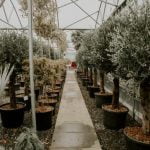When it comes to creating a serene and beautiful outdoor space, Bali garden design offers a unique blend of natural elements, cultural significance, and modern trends. From lush greenery to tranquil water features, the design elements of a Balinese garden provide inspiration for creating a peaceful retreat right in your own backyard.
The history and culture of Balinese gardens date back centuries, with traditional designs incorporating sacred symbols and rituals. Understanding the origins of this style can help in incorporating authentic elements into a modern interpretation of Balinese garden design.
In this article, we will explore the rich history and cultural significance of Balinese gardens, the key elements that define their traditional design, as well as modern trends in Bali garden design. We will also discuss expert tips for choosing the perfect plants, incorporating water features, and creating a relaxing atmosphere.
Whether you are looking for inspiration or practical advice on maintaining a beautiful Balinese garden throughout the seasons, this guide will help you bring the beauty and tranquility of Bali into your own outdoor space.
The History and Culture of Balinese Gardens
The history and culture of Bali gardens go back centuries, with the design and layout being heavily influenced by the unique traditions and customs of the Balinese people. The creation of these gardens is deeply tied to their religious and spiritual practices, as well as their connection to nature.
Religious Significance
In traditional Balinese culture, gardens are considered sacred spaces that are often attached to temples and other religious structures. These gardens are designed to be a physical representation of heaven on earth, with each element carefully chosen to reflect the balance and harmony found in nature.
Symbolism in Design
Every aspect of a Balinese garden, from the placement of plants to the layout of paths and water features, carries deep symbolic meaning. For example, ponds and pools are often placed in strategic locations to represent different elements such as fire, water, earth, and air. Additionally, statues and sculptures of deities or mythical creatures can be found throughout the garden to provide protection and offer blessings.
Rituals and Ceremonies
Balinese gardens also serve as important settings for various rituals and ceremonies throughout the year. These events range from small daily offerings to elaborate temple festivals, all of which contribute to the ongoing maintenance and care of these beautiful outdoor spaces. The connection between religious practices and gardening has created a rich tradition that continues to influence modern Bali garden design.
Overall, understanding the history and cultural significance behind Balinese gardens can provide valuable insight when it comes to creating a truly authentic outdoor space that captures the essence of this ancient tradition.
Elements of Traditional Balinese Gardens
The traditional Balinese garden design is a reflection of the rich history and culture of Bali, with its roots stemming from ancient practices and beliefs. The key elements of traditional Balinese gardens are deeply rooted in the island’s Hindu religion, which emphasizes harmony between nature and humanity.
One of the most prominent features of Balinese gardens is the concept of “Tri Hita Karana,” which translates to “three causes of well-being” in English, representing the harmonious relationship between humans, nature, and the divine.
In traditional Balinese gardens, architectural features such as intricately carved stone statues and shrines play a significant role in incorporating spiritual and religious symbolism into the landscape. These carefully placed elements serve as focal points within the garden, creating a sense of tranquility and spiritual connection.
Another essential element of traditional Balinese gardens is the use of natural materials like bamboo, wood, and thatch to construct gazebos, pathways, and fences. These materials not only blend seamlessly with the natural surroundings but also evoke a sense of authenticity and timelessness.
The layout of traditional Balinese gardens often follows a harmonious balance between open spaces and lush greenery. Lush tropical plants such as frangipani, heliconia, lotus flowers, and orchids are strategically planted to create a tapestry of colors and textures that complement the surrounding architecture.
Additionally, water features such as ponds or fountains are integral to traditional Balinese garden design as they symbolize purity and serenity while providing a soothing ambiance. By incorporating these elements into your own garden design, you can capture the essence of traditional Balinese gardens while creating a tranquil oasis in your outdoor space.
Modern Balinese Garden Design Trends
When it comes to designing a modern Balinese garden, there are several trends that have gained popularity in recent years. These trends combine traditional Balinese design elements with contemporary features to create a unique and stylish outdoor space.
Sustainable and Eco-Friendly Design
One of the major trends in modern Balinese garden design is the focus on sustainability and eco-friendliness. This includes using native plants, natural materials, and creating a space that encourages biodiversity. Incorporating sustainable features such as rainwater harvesting systems, energy-efficient lighting, and organic gardening practices are also key components of this trend.
Integration of Indoor and Outdoor Spaces
Another popular trend in modern Balinese garden design is the seamless integration of indoor and outdoor living spaces. This can be achieved through the use of open-air pavilions, pergolas, or verandas that connect the interior of the home with the garden. The idea is to create a fluid transition between indoor and outdoor areas, allowing for a harmonious flow between the two spaces.
Contemporary Water Features
Water has always been an integral part of traditional Balinese gardens, and in modern designs, this element is given a contemporary twist. From sleek reflecting pools to minimalist fountains, water features in modern Balinese gardens are designed to add a sense of tranquility and serenity while complementing the overall aesthetic. Additionally, incorporating sustainable water management techniques such as water recycling or natural filtration systems aligns with the eco-friendly trend mentioned earlier.
These modern Balinese garden design trends reflect a fusion of timeless traditions with contemporary sensibilities, offering homeowners endless possibilities for creating their own serene paradise inspired by Bali gardens ideas design.
Choosing the Perfect Plants for a Balinese Garden
When it comes to creating a stunning Balinese garden, choosing the perfect plants is essential to achieving an authentic and beautiful look. Traditional Balinese gardens typically feature a lush and tropical landscape, filled with vibrant colors and rich textures. To achieve this look in your own garden, it’s important to select the right plants that will thrive in your climate and contribute to the overall ambiance of your outdoor space.
Here are some popular plant options for a Balinese garden:
- Frangipani (Plumeria): Known for their fragrant flowers and lush green foliage, frangipani trees are a staple in Balinese gardens. These versatile trees can be used as a focal point or as part of a larger planting scheme.
- Bougainvillea: These colorful and ornamental vines add a pop of vibrant color to any garden. With their ability to climb and trail, bougainvillea can be trained over pergolas, trellises, or arbors to create a stunning visual display.
- Bird of Paradise (Strelitzia): The striking orange and blue flowers of the bird of paradise plant make it a standout choice for adding tropical flair to your garden. Their unique blooms resemble the plumage of a colorful bird, adding an exotic touch to any Balinese-inspired landscape.
In addition to these specific plant options, it’s important to consider incorporating a variety of tropical foliage such as palms, ferns, and other leafy plants to create a dense and jungle-like atmosphere in your Balinese garden. These lush greenery will help enhance the overall aesthetic and provide an inviting oasis for relaxation and enjoyment.
When selecting plants for your Balinese garden, it’s also crucial to ensure that they are suitable for your local climate and growing conditions. Consulting with a gardening expert or landscape designer can provide valuable insight into which plants will thrive in your area while still capturing the essence of traditional Bali gardens.
By carefully choosing the perfect plants for your Balinese garden, you can create a captivating outdoor sanctuary that reflects the beauty and tranquility of Bali’s natural landscapes.
Incorporating Water Features in Bali Garden Design
One of the key elements of traditional Balinese gardens is the presence of water features. In Balinese culture, water is considered a sacred and essential element, and it plays a significant role in the design of their gardens. Incorporating water features into your Bali garden design can bring a sense of tranquility, beauty, and balance to your outdoor space.
There are several types of water features that are commonly found in traditional Balinese gardens, including ponds, fountains, and cascading waterfalls. These features not only add visual interest to the garden but also create a soothing sound that enhances the overall ambience. Additionally, the presence of water can help to cool the surrounding area, which is especially beneficial in hot climates.
When designing your Bali garden with water features, it’s important to consider how they will interact with the other elements in the space. For example, you may want to position a fountain or waterfall near seating areas to create a relaxing atmosphere for lounging and entertaining. Ponds can be adorned with lotus flowers or koi fish to add color and movement to the garden.
Experts recommend incorporating natural materials such as stone and wood when creating water features in Balinese garden design. These materials not only complement the lush foliage and vibrant flowers but also contribute to the overall harmony and serenity of the space.
| Water Feature | Benefits |
|---|---|
| Ponds | Add visual interest and provide habitat for aquatic life |
| Fountains | Create soothing sounds and help cool the surrounding area |
| Waterfalls | Add visual interest and create a relaxing atmosphere |
Creating a Relaxing and Tranquil Atmosphere in Your Balinese Garden
When it comes to creating a relaxing and tranquil atmosphere in your Balinese garden, there are several key design elements to consider. One of the most important features of a Balinese garden is the use of natural materials such as stone, wood, and bamboo. These materials not only add an authentic touch to the design but also help create a sense of harmony with the surrounding environment.
In addition to natural materials, incorporating traditional Balinese architecture into your garden design can help create a peaceful atmosphere. This can include elements such as open pavilions, known as “bale,” and carved stone statues. These architectural features serve both practical and aesthetic purposes, providing shaded areas for relaxation and adding visual interest to the space.
Another essential aspect of creating a tranquil atmosphere in a Balinese garden is the use of carefully chosen plants and landscaping. Traditional Balinese gardens often feature lush tropical foliage, colorful flowers, and strategically placed trees for shade. To achieve this look in your own garden, consider incorporating native Balinese plants such as frangipani, hibiscus, and orchids.
When it comes to water features in Bali garden ideas design A common element used in creating a relaxing ambiance is water features like ponds with lotus flowers or gentle streams that mimic the natural flow of water. The sound of flowing water adds to the serene atmosphere and creates a feeling of calmness.
| Bali Garden Design Element | Key Points |
|---|---|
| Natural Materials | Use stone, wood, and bamboo for an authentic touch |
| Traditional Architecture | Incorporate open pavilions and stone statues for visual interest |
| Native Plants | Choose lush tropical foliage and colorful flowers for an authentic look |
Balinese Garden Design Inspiration and Ideas From Experts
When it comes to creating a beautiful Balinese garden, seeking inspiration and ideas from experts in the field can be incredibly helpful. Balinese garden design is known for its tranquil atmosphere, lush greenery, and carefully curated elements that reflect the rich culture and history of Bali. Whether you are looking to create a small Balinese garden in your backyard or a larger landscape, drawing from expert advice can help you achieve the perfect balance of beauty and serenity.
Here are some Balinese garden design inspiration and ideas from experts to get you started on creating your own slice of paradise:
- Seeking Inspiration from Traditional Balinese Gardens: Many experts recommend studying traditional Balinese gardens to understand the key elements that make them so unique. From intricate stone carvings to carefully placed water features, traditional Balinese gardens offer a wealth of inspiration for those looking to incorporate authentic design elements into their own outdoor spaces.
- Creating Harmonious Landscapes: Experts often emphasize the importance of creating harmonious landscapes that blend seamlessly with the natural surroundings. This may involve using native plants, incorporating natural materials such as stone and wood, and paying close attention to the flow and balance of the overall design.
- Bringing in Cultural Elements: An essential aspect of Balinese garden design is infusing cultural elements into the space. Experts suggest incorporating traditional statues, ornate wood carvings, and symbolic decor to add layers of meaning and authenticity to the garden.
Drawing inspiration from experts in Balinese garden design can provide valuable insights and ideas for creating your own captivating outdoor oasis. By learning from those who have mastered the art of crafting serene and beautiful spaces, you can bring a touch of Bali’s natural beauty into your own backyard or landscape.
Tips for Maintaining a Beautiful Balinese Garden Throughout the Seasons
Maintaining a beautiful Balinese garden throughout the seasons requires careful planning and regular attention to ensure that the garden continues to thrive and look its best all year round. With the right strategies and maintenance practices, you can enjoy a stunning and vibrant outdoor space inspired by the beauty of Bali.
One key tip for maintaining a beautiful Balinese garden is to stay on top of regular pruning and trimming. This not only helps to keep your plants healthy and in good shape, but it also contributes to the overall aesthetic appeal of your garden. Additionally, keeping an eye on the health of your plants will allow you to address any issues before they escalate, helping to maintain the beauty of your Balinese garden.
Another important aspect of maintaining a beautiful Balinese garden is proper irrigation and watering. Different plants have different water requirements, so it’s essential to understand the needs of each plant in your garden. During dry seasons, make sure to provide adequate water for your plants, while during wet seasons, it’s crucial to prevent overwatering which can lead to root rot and other issues.
In addition to these tips, regularly fertilizing your plants with appropriate nutrients will help them thrive throughout the changing seasons. Understanding the specific needs of each plant species in your Balinese garden will guide you in providing them with the right balance of nutrients for optimal growth and resilience. By implementing these maintenance tips, you can ensure that your Balinese garden remains a lush and inviting sanctuary regardless of the season.
Conclusion
The beauty and tranquility of Balinese gardens can be a wonderful addition to any outdoor space. By understanding the history, culture, and elements of traditional Balinese garden design, homeowners can create their own slice of paradise right in their backyard. With the right plants, water features, and design inspiration from experts, it is possible to bring the essence of Bali into your own outdoor space.
Incorporating the lush greenery, vibrant flowers, and soothing water features commonly found in traditional Balinese gardens can help create a relaxing and tranquil atmosphere in your own outdoor space. Whether you have a small backyard or a sprawling garden, there are Balinese garden design trends that can be tailored to fit any size or style. By maintaining a beautiful Balinese garden throughout the seasons with tips from experts, homeowners can enjoy their slice of Bali all year round.
The appeal of Bali gardens lies in their ability to create a sense of peace and serenity amidst natural beauty. By incorporating the principles of traditional Balinese garden design alongside modern trends and inspiration from experts, homeowners can transform their outdoor space into an oasis that reflects the beauty and tranquility of Bali gardens.
So whether you’re looking for a place to relax after a long day or to entertain guests in a serene setting, bringing the beauty of Bali gardens into your own outdoor space is a design choice that’s sure to bring joy and tranquility for years to come.
Frequently Asked Questions
How to Design a Balinese Garden?
Designing a Balinese garden involves creating a lush, tropical oasis with plenty of greenery, water features, and traditional Balinese elements. Consider using natural materials like stone and wood, incorporating statues or carvings, and focusing on creating a harmonious and peaceful atmosphere.
What Plants Grow Well in Balinese Garden?
Many plants thrive in Balinese gardens due to the tropical climate. Popular choices include frangipani, orchids, heliconia, bamboo, banana trees, and palms. These plants not only add to the lushness of the garden but also provide vibrant colors and exotic textures that are characteristic of Balinese landscapes.
How Do You Style a Triangle Garden?
Styling a triangle garden requires careful planning to make the most of the space available. Utilize the triangular shape by creating different sections for planting, paths, or seating areas.
You can also consider incorporating vertical elements such as trellises or arches to add height and interest to the garden design. Overall, it’s important to focus on balance and symmetry within the triangular space.

Welcome to my gardening blog! I am passionate about plants and enjoy sharing my knowledge and experiences with others. In this blog, I will write about everything related to gardening, from tips on how to get started to updates on my own garden projects.





